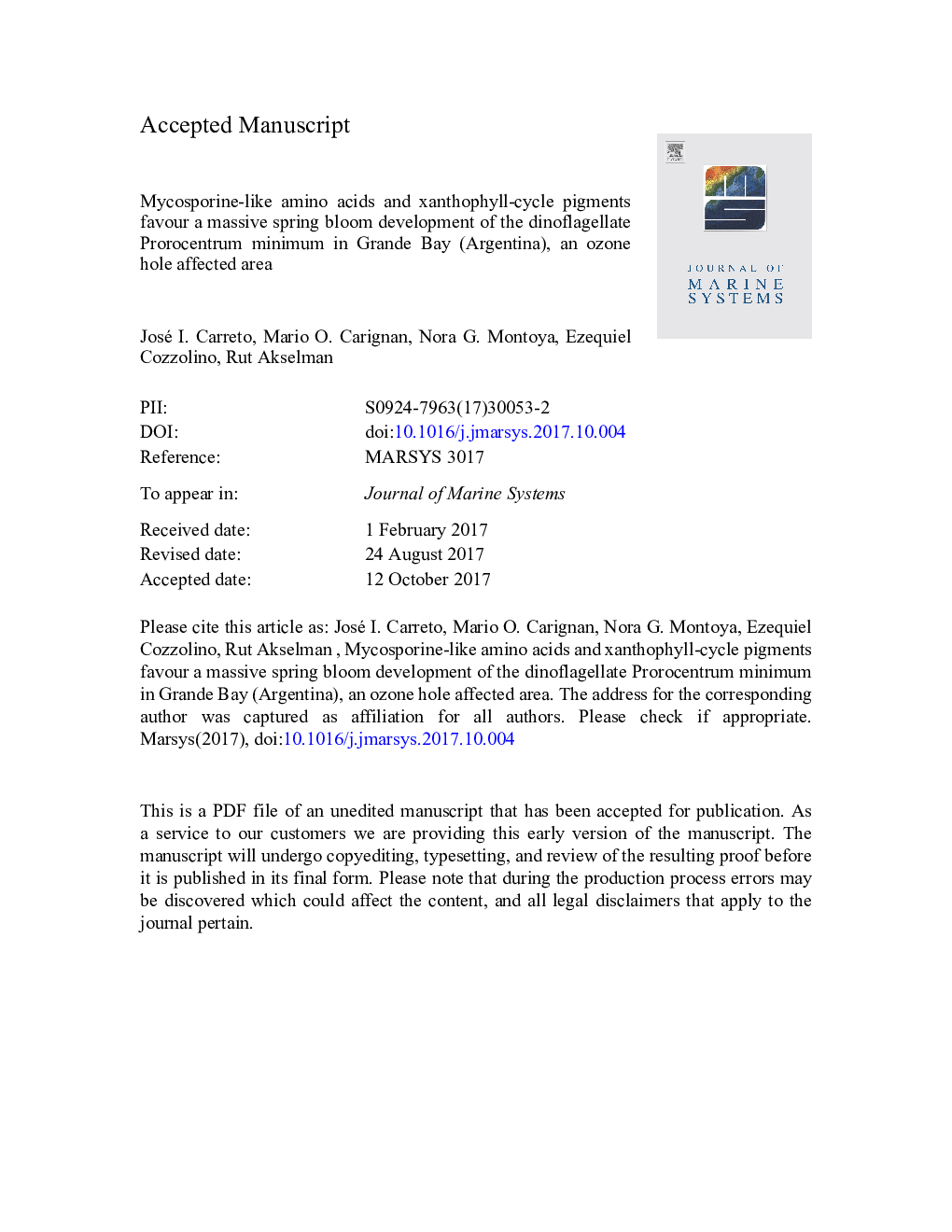| Article ID | Journal | Published Year | Pages | File Type |
|---|---|---|---|---|
| 8885999 | Journal of Marine Systems | 2018 | 37 Pages |
Abstract
In Grande Bay (Southern Patagonian Shelf) in a eutrophic and recirculating area slightly stratified during spring, we observed an intense (up to 1 Ã 107 cells Lâ 1) and shallow, quasi mono-specific bloom of the dinoflagellate Prorocentrum minimum. Peridinin was the most abundant carotenoid, but the relative amounts of the xanthophyll cycle carotenoids (diadinoxanthin + diatoxanthin = DT) to light-harvesting pigments were high (DT/Chl a ratio = 0.32 and DT/peridinin ratio = 0.40). Shinorine, usujirene, palythene, mycosporine-serine-glycine methyl ester and palythenic acid were the primary mycosporine-like amino acids (MAAs), followed by mycosporine-glycine, palythine, and porphyra-334. The ΣMAAs/Chl a ratios (up to 27.9 nmol/nmol) were in the upper range reported either in nutrient-replete dinoflagellate cultures or natural populations. We monitored, from space (using satellite ocean colour data), the spatial and temporal bloom variability (from September 22 to October 31, 2005) using an approach to discriminate dinoflagellate from diatom blooms. The results indicated that an intense diatom bloom started in early spring but was rapidly replaced by an intense bloom of the dinoflagellate P. minimum, although the nutrient concentrations were apparently not limiting. The most notorious change in this period was a sharp increase in the levels of solar UVB radiation (UVB index ~ 9.0) as a consequence of the overpass of the polar vortex over this area. We postulated that the synthesis and accumulation of MAAs and xanthophyll pigments, were competitive advantages for the opportunistic red tide dinoflagellate P. minimum over the sensitive diatoms, favouring the development of their surface blooms in this seasonally solar UVB radiation (UVBR) affected area.
Related Topics
Physical Sciences and Engineering
Earth and Planetary Sciences
Oceanography
Authors
José I. Carreto, Mario O. Carignan, Nora G. Montoya, Ezequiel Cozzolino, Rut Akselman,
